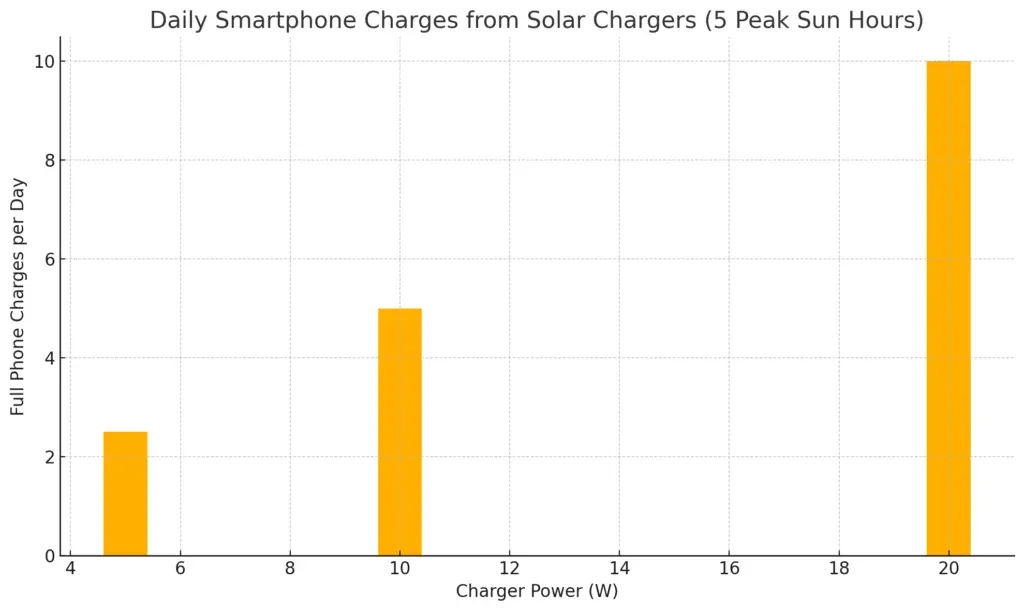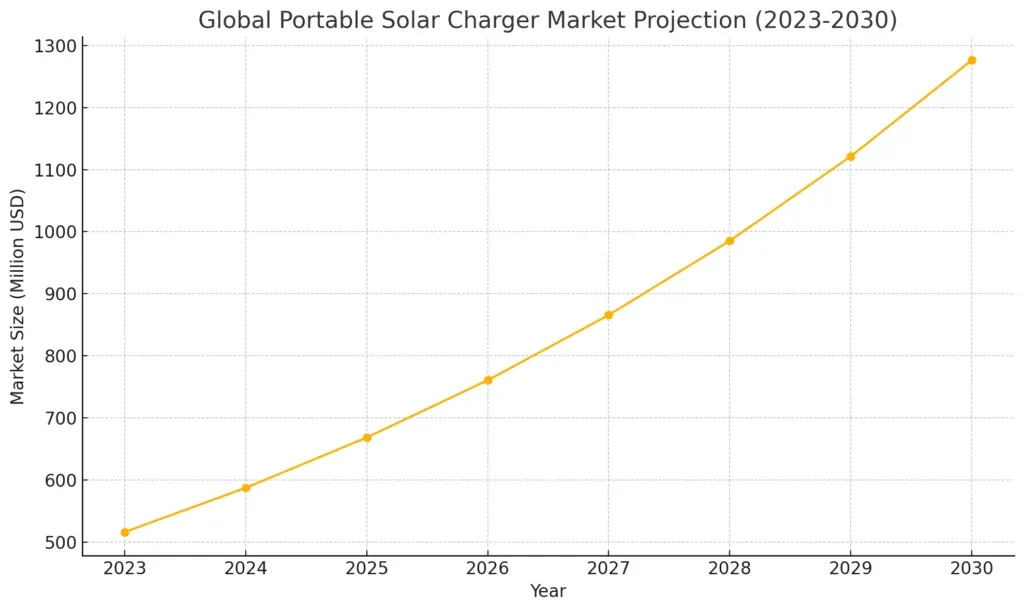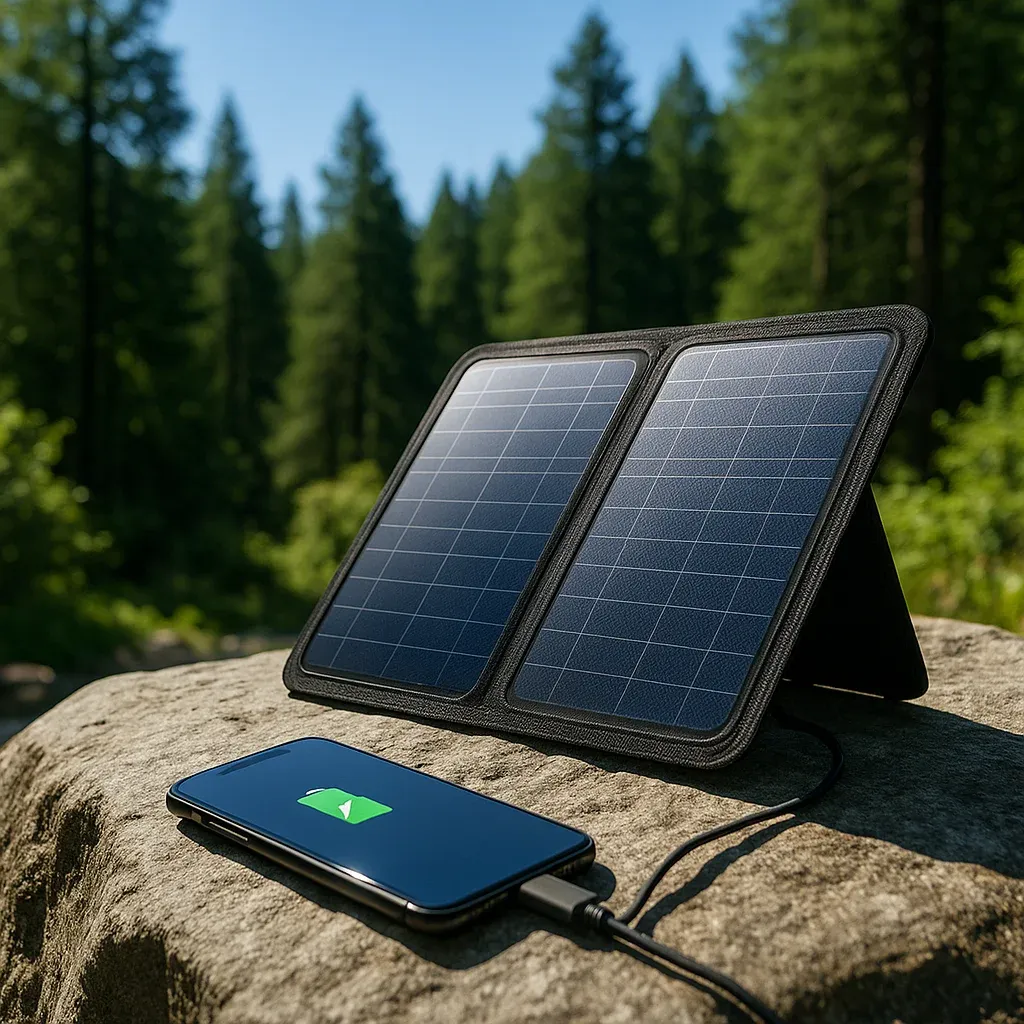Harnessing the Sun: Why a Solar Energy Charger Makes Sense in 2025
Imagine you’re out camping, surrounded by pine-scented air and the crackle of a campfire—only to find your phone is nearly dead. You could settle for unread messages until you’re back home, or you could pull out a compact solar energy charger, unfold its panels, and start harvesting free power from the sunlight above. In fact, thanks to an average of 4–5 peak sun hours per day across much of the U.S.(Unbound Solar), even a 10 W charger can capture roughly 50 Wh of energy daily—enough for five full smartphone charges on a single sunny day. (See Chart 1 above.)
That simple scenario underscores why solar chargers are more than just a novelty—they’re a reliable, eco-friendly backup power solution for travelers, outdoor enthusiasts, and anyone who wants to stay connected without draining the grid.
How Solar Energy Chargers Work
At their core, solar chargers combine:
- Photovoltaic panels that convert sunlight into DC electricity
- A charge controller (often built-in) that regulates voltage
- Sometimes a battery bank to store energy for use after sunset
When the sun shines, panels generate electricity, which flows directly into your device or into an internal battery. No cords. No outlets. Zero operating costs.
Key Benefits of Solar Chargers
1. 100% Renewable, Zero Emissions
Every watt you draw from the sun is a watt you’re not pulling from fossil-fuel–powered plants. Over one year, a modest 20 W charger can offset roughly 73 kWh of grid electricity—cutting about 62 lbs of CO₂ emissions in regions averaging 0.85 lbs CO₂/kWh from traditional sources.
2. Real Savings Over Time
At $0.15 per kWh, charging a 10 W device for eight hours daily costs about $0.12 per month if plugged into the grid—which adds up over time. A solar charger eliminates that entirely after your one-time purchase.
3. Portability & Versatility
Solar chargers come in sizes from foldable 5 W panels to rugged 50 W backpack units. Use them for smartphones, tablets, action cameras, and even small USB-powered lights.
Portable Solar Charger Market: Explosive Growth
The global portable solar charger market was valued at $515.8 million in 2023 and is projected to swell to $1.276 billion by 2030—a compound annual growth rate of nearly 14 percent.(Grand View Research) (See Chart 2 above.) Consumers’ thirst for off-grid solutions and rising environmental awareness are fueling this surge.
Choosing the Right Solar Charger
Here’s a quick comparison of popular options:


| Type | Output (W) | Battery Pack (mAh) | Best For |
|---|---|---|---|
| Foldable Pocket | 5–10 | Built-in ~10,000 | Phones & small devices |
| Backpack Panel | 20–30 | Optional add-on | Tablets, cameras, lights |
| All-in-One Kit | 30–50 | 20,000–30,000 | Multi-device charging |
- Foldable Pocket Charger (5 W): Ultra-light for hiking—see this popular option.
- Backpack Solar Panel (20 W): Mounts on packs or tents—learn more about this kit.
- All-in-One Power Bank (30 W + battery): Your evening backup for overcast days.
Maximizing Your Solar Charger’s Performance
- Optimal Positioning: Aim directly at the sun’s midday path.
- Clean Panels: Wipe away dust or grime to keep efficiency high.
- Right Angle: Tilt panels according to season—higher tilt in winter, flatter in summer.
- Backup Storage: Choose a charger with integrated battery if you need power after dusk.
Conclusion: Take Charge with Solar
Whether you’re off-grid for a weekend or facing a power outage at home, a solar energy charger is a dependable companion. You’ll enjoy free sunlight, lower carbon impact, and the peace of mind that comes with having power wherever you go.
Ready to stay connected under the open sky?
- Sketch your next outdoor kit.
- Compare top solar chargers in our buyer’s guide.
- Grab the charger that fits your adventure style and never run out of juice again.
Affiliate Disclaimer:
Some links above are affiliate links. If you make a purchase through them, we may earn a small commission—at no extra cost to you. We only recommend gear we trust to keep you powered by the sun!

